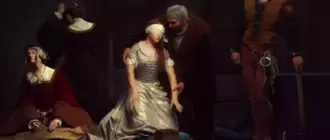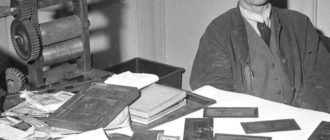
Photorealism is a branch of fine art in which an artist creates realistic paintings or sculptures based on photography. The works in the genre of photorealism are characterized by incredible believability and meticulous portrayal of the smallest details. The works often differ from the original snapshot only in their large size. Photorealist artists prefer to depict ordinary city landscapes or still lifes from everyday things, which brings this style closer to pop art.

Photorealism, History
Photorealism originated in the late 1960s among artists in New York and California, and a few years later spread to Europe. The term was coined by art dealer Louis K. Meisel and first appeared in print in 1970. Then took place the first serious exhibition in the history of photorealism “Twenty-two Realists”. Meisel also identified the main characteristics of photorealists, including the use of photography to transfer an image to canvas and the photographic accuracy of the finished work.

Photorealism, like pop art, was formed as a result of opposition to abstract expressionism and minimalism. In these areas, improvisation, innovation and originality were valued above all, but no one took artistic technique seriously. Pop art representatives criticized this approach in a satirical manner, pointing out the absurdity and commercial orientation of most of the works. Photorealists chose a different path: through painstaking work, they emphasized the value of each image and the importance of academic methods.

The creativity of the photorealists was subjected to merciless criticism.
Many viewers wondered: is there a difference between an artist and a copying technique with such a high accuracy of the drawing? But time put everything in its place. Now works of this genre are exhibited in the world’s leading museums of contemporary art, and new followers have replaced the first representatives of the trend.
In the 1990s, improved techniques and digital techniques led to even higher accuracy of paintings, including those with the illusion of three-dimensionality. In this form, photorealism came to be called hyperrealism, or superrealism. Modern authors treat the original photographic image with more freedom and do not always copy it accurately. Currently, the popularity of the genre is gradually increasing, thematic exhibitions are often held, albums and theoretical works are published.

Photorealism principles
The essence of the work of a photorealist is the meticulous transfer of an image from a photograph to a canvas using paints and other means. Photorealist sculptors are known, and some authors use natural materials, hair, woven tapestries and other non-standard solutions. The key principle of photorealism is the precision of the finished work, which is achieved by the highest level of technical skill. Authors usually make the original photo themselves. The founders of the genre preferred banal subjects: old cars, fragments of buildings, everyday objects. Compared to photography, an artist’s work can be many times larger. To accurately transfer details and maintain proportions, you can project the slide onto the canvas or use the grid method. To demonstrate his masterly technique, the author often chooses complex images. They feature reflections, glass structures or many geometrically precise details of the cityscape.

The most famous representatives of photorealism
This genre doesn’t have many supporters due to its technical complexity. But it is precisely due to the highest skill that success and popularity come to photorealists. There are many famous names both among the classics of the 1970s and among our contemporaries. Here are some of the most famous representatives of photorealism:
- Richard Estes. A representative of the first generation of photorealists and an unsurpassed master of urban landscapes. In his work, he uses a whole combination of images, getting not perfectly accurate, but very spectacular and reliable panoramas.
- Audrey Flack. Another style pioneer. When the New York Museum of Modern Art decided to acquire the work of photorealists, it was her paintings that were the first to choose. Duane Hanson. Renowned sculptor, author of life-size realistic human figures. Hanson often touched upon acute social themes in his work, such as inequality of people, racial discrimination or the Vietnam War.
- Chuck Close. The author of large photorealistic portraits made in a variety of unusual techniques. For example, his jacquard tapestries, which are woven on digital looms based on the daguerreotype, are interesting. In working with color, Close is close to pointillist artists.
- Ben Schonzeit. New York artist creating large format acrylic still lifes. The author does not try to choose the best frame for the picture he draws simple things that occur every day.
Collections of works by photorealists can be seen at the Museum of Modern Art in New York, the Georges Pompidou Center in Paris, and the Tate Modern gallery in London. There are also outstanding representatives of the style in Russia. The most famous of them is Semyon Faibisovich.
Paintings

















